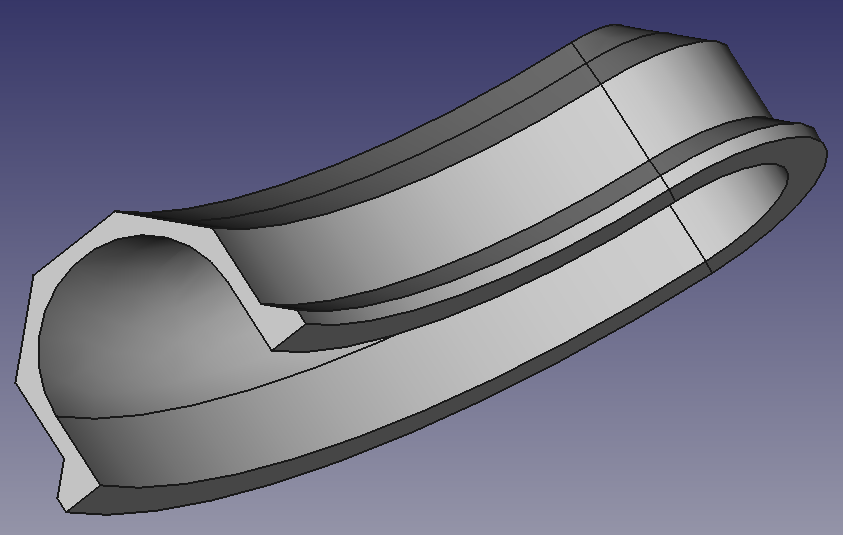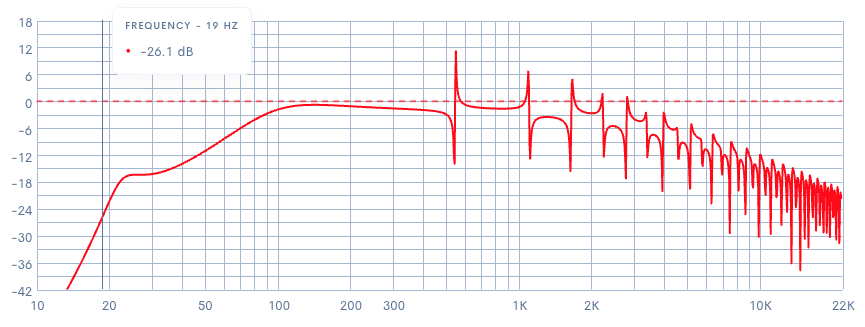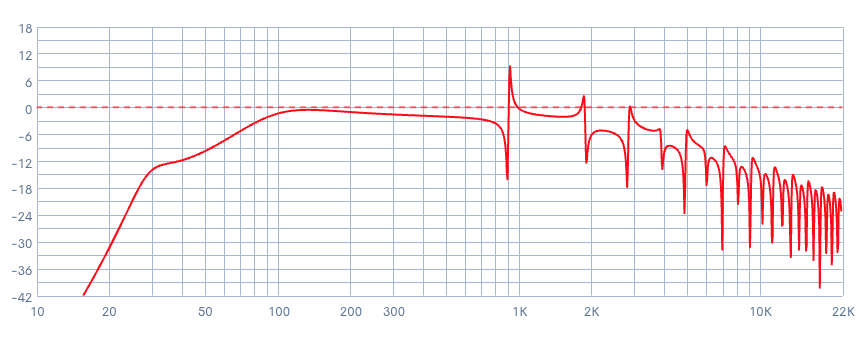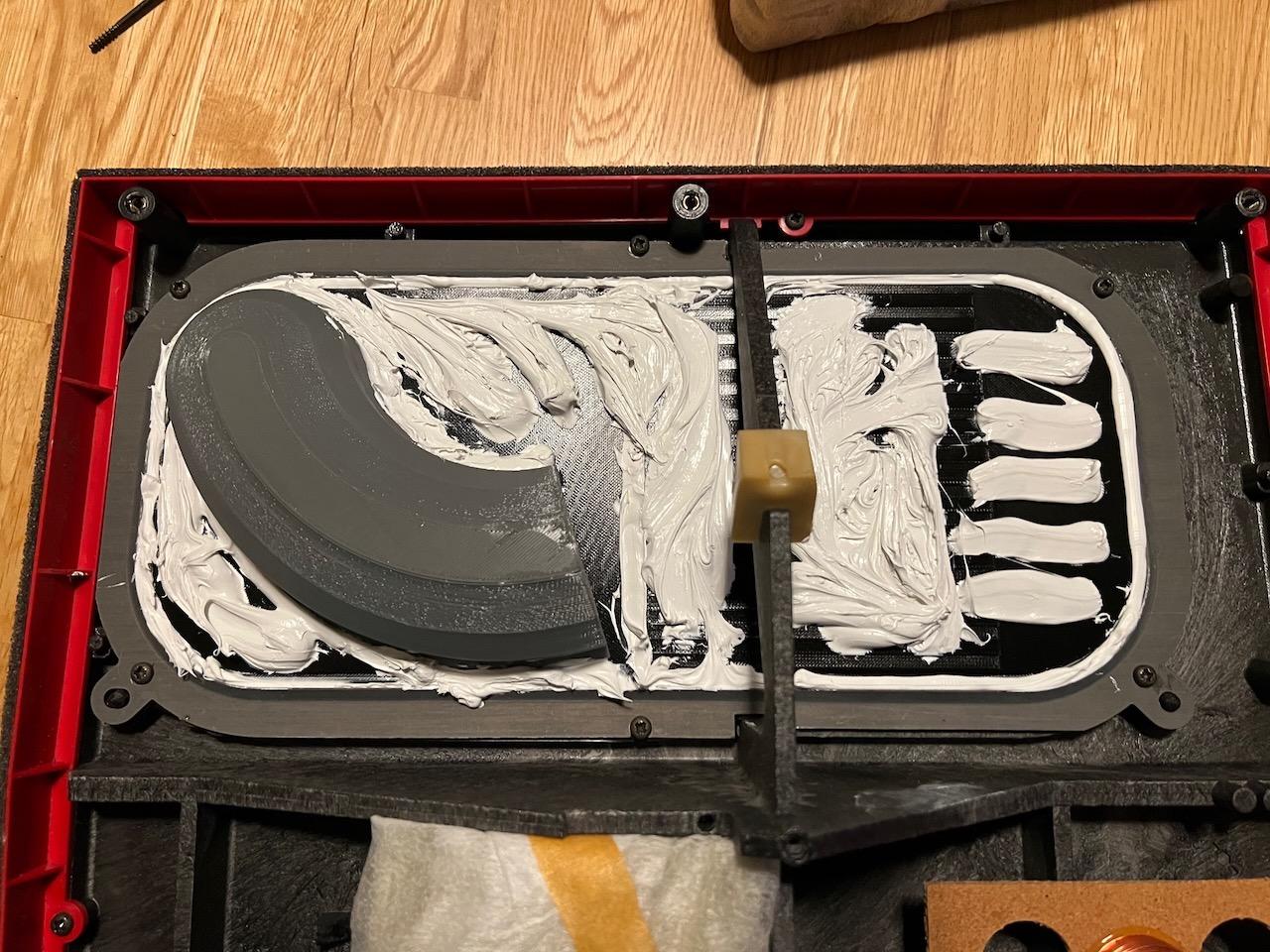- This topic has 3 replies, 2 voices, and was last updated 2 years, 4 months ago by
lumbergh.
- AuthorPosts
- 7 October 2022 at 12:53 #39656
Hi everyone, I recently acquired a pair of Red Line 45 speakers.
The bass speaker drivers surprisingly look like new but the surround for the ABRs had of course completely disintegrated.I have seen that some have replaced the surround with some other material.
But considering that the original surround had the same shape as a regular speaker foam surround it would seem impossible to replicate it’s behavior with something flat. A flat surround could possibly be made to have the same behavior at low amplitudes but would be much more non linear and quickly get stiffer with a bigger excursion, hence a bass reflex port seems to be the only resonable fix.
I have also seen that others have taken this route, but unfortunately I haven’t seen any exact dimensions mentioned anywhere.I’m creating a printable model for the bass reflex tube, so I tried to do some calculations and measurements to hopefully get it right the first time. But unfortunately it produced new questions.

Here’s what I’ve done so far:
The ABR is 30 cm x 12 cm with 3 cm radius rounded corners
Area metal = 30 * 12 – 4 * 3 * 3 + pi * 3 * 3 ~= 352 cm2
Additional area of 1/3 surround ~= 0.2 * 2 * 13 * 12 = 10 cm2
Equivalent diameter with same area = 2 * sqrt(362/pi) ~= 21.5 cmWeight of metal = 300 g
Guesstimate of foam weight (1 mm thick, 150kg/m3 density) = 0.0362 * 0.001 * 100 kg ~= 6gThen using the method here backwards gives:
Port length with equivalent air weight = 0.306 / (0.0362 * 1.21) m ~= 700 cmThen inserting values here with 16 l box until it fits gives fb: 31 Hz
I have measured the driver and the values seem to vary quite a bit with amplitude, suggesting it might not be all that linear.
This is roughly the mean of the measurements:
Fs = 80 Hz
Re = 7.3 Ohm
Le = 0.4 mH
Qes = 0.75
Qts = 0.6
Mms = 8 g
Vas = 14 l
SD = 133 cm2Then plug this in here as if it was a bass reflex box.
Finally, behold a not exactly textbook alignment:
Plot thickens, did I screw up my measurements, my calculations or is this how it was designed?
Or will this be a bit more regular if you put the RL 60 drivers there instead?
Is the RL 60 and RL 45 ABR the same weight?On the other hand, considering close to wall or corner bass gain, maybe this makes sense.
This slope would probably work well with different corner or wall placement but sound thin further from walls.
Is this how it behaves in practice when it works?I won’t be able to test myself until I have fixed it.
But let’s also check if the bass reflex conversion kit matches this fb then.
Taking some measurements from a picture of it gives that the radius of the tube is about 2 cm and the length is about 10 cm.
It’s a bit hard to estimate the area of the tube but I’m calculating it as if it was circular.
It definitely looks bigger than a semicircle.
I think the different end correction factor when the port lays flat on the panel also adds about half the diameter to the length making it about 12 cm with correction.Plugging in the values here gives about 40 Hz.
The diameter needs to be about 3 cm to match the ABR fb but that would give an unhealthy air velocity.
4 cm might be a bit small too.Around 40 Hz fb looks like a better choice for this driver.
I think I’m going to go for that:
Has anyone else measured this driver?
Or taken actual measurements on the conversion kit, if that’s even meant to be compatible with RL 45?14 October 2022 at 03:07 #39657Hi,
i don’t know much about that stuff you described, but maybe a picture of the original B&O Bassreflex conversion kit might help you 🙂
https://archivedforum.beoworld.org/forums/p/16202/124895.aspx#124895
Lots of people were more than happy when the Redline 60.2 (or converted Redline 60) played their music.
14 October 2022 at 09:25 #39658Now I have completed the conversion of my RL 45s.
I had scaled the picture incorrectly before when measuring and the original port should be very close to 50 mm instead of 40 mm as I previously though.
Because of the limited space the height of the pipe must be small enough to fit so the resulting area is likely not that much bigger though.Fb was very close to the target 40Hz when I used the 44 mm port, i.e. the port had the same area as a 44 mm diameter tube.
The files can be found at thingiverse
And this is what it looks like:

I spray painted the front facing side of the plates to get them more air tight.
Acrylic latex caulk was used on the perimeter because it can be removed easily if need be.
Wet room caulk was used elsewhere, for extra mass and damping.16 October 2022 at 06:07 #39659That’s the picture I did use, but it’s hard to see the height of the port.
I think I have gotten the other dimensions very close now.
If someone provides measurements of a real conversion kit I can update the model.
I am happy with the result of the converted RL 45 and considering the condition of my bass drivers I suspect a lot of them still are in good enough shape to warrant a conversion.
- AuthorPosts
- You must be logged in to reply to this topic.





